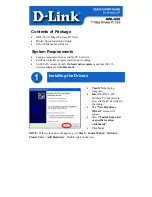
11 DMA Ports
11 – 20
11.3.4.3 Short Read Cycle
The host reads the contents of a ADSP-2181 internal memory location using
the IDMA short read cycle. The read cycle, shown in Figure 11.11, consists
of the following steps:
1. Host ensures that
IACK
line is low.
2. Host asserts
IRD
and
IS
(low), directing the ADSP-2181 to put the
contents of the location pointed to by the target IDMA address on the
IAD15-0 address/data bus.
3. ADSP-2181 deasserts
IACK
line, indicating the requested data is being
fetched.
4. Host detects the
IACK
line is now high and reads the data (PREVIOUS
DATA) from the IAD15-0 address/data bus, before the requested data
(READ DATA) is driven on the IAD address/data bus—not waiting for
the ADSP-2181 to assert the
IACK
line. After reading the data, the host
deasserts
IRD
and
IS
.
The host must do an initial “dummy” read, to make the ADSP-2181 put the
first data word (PREVIOUS DATA) on the IAD15-0 bus.
Note that IAL is low (inactive) and
IWR
is high (inactive) throughout the
read operation.
The IDMA Short Read and Long Read cycles provide different alternatives
for implementing your DMA transfers. Short reads are useful for hosts that
can handle the faster timing of these accesses, while long reads allow
slower hosts more time.
The IDMA short read cycle also serves as a single-location data buffer. If
you are using the ADSP-2181 in a multiprocessing environment, using this
buffer is one way to avoid tying up the IAD bus (waiting for
IACK
signal).
Warning:
If an IDMA address latch cycle or a ADSP-2181 write to the
IDMA Control register occurs after a first Program Memory read cycle, the
IDMA port will lose the second half of the Program Memory word. The
ADSP-2181 treats the next host data on the IAD address/data bus as the
new contents of the IDMA Control Register.














































